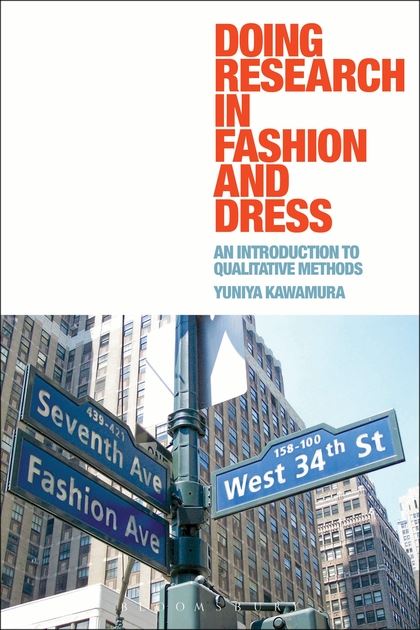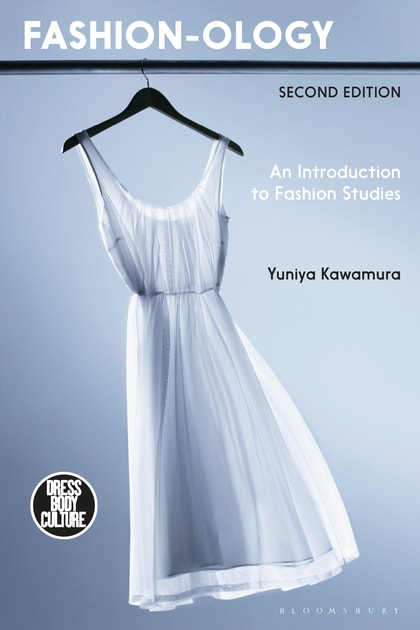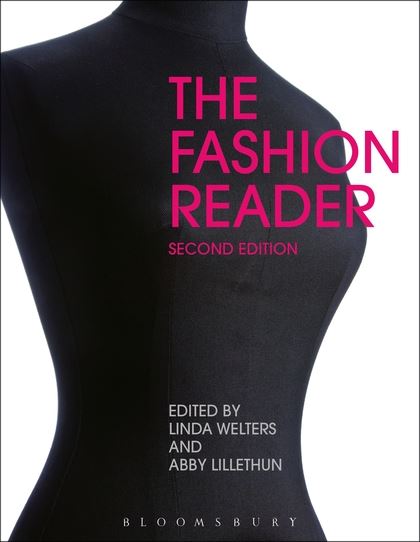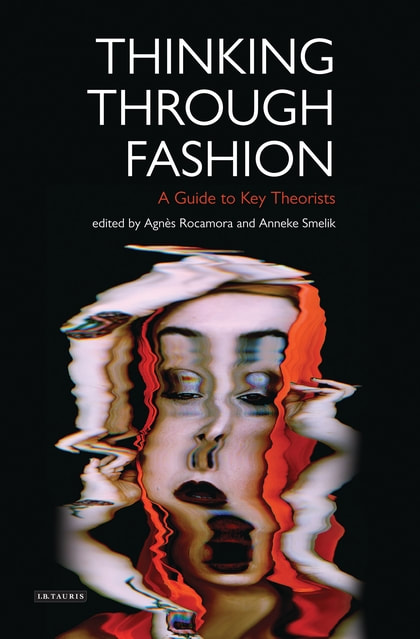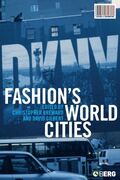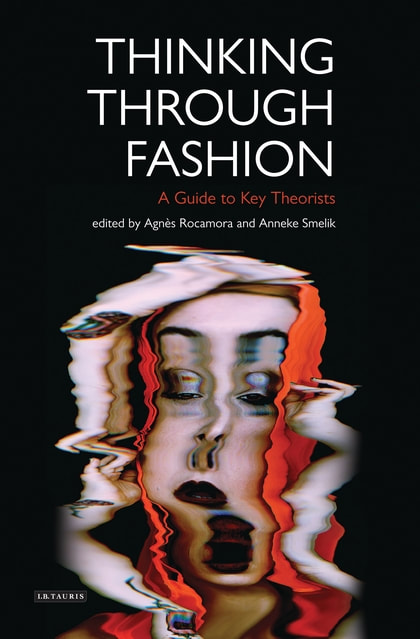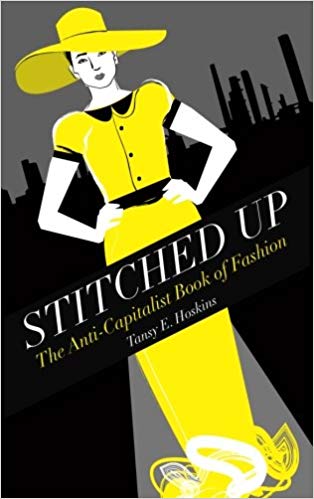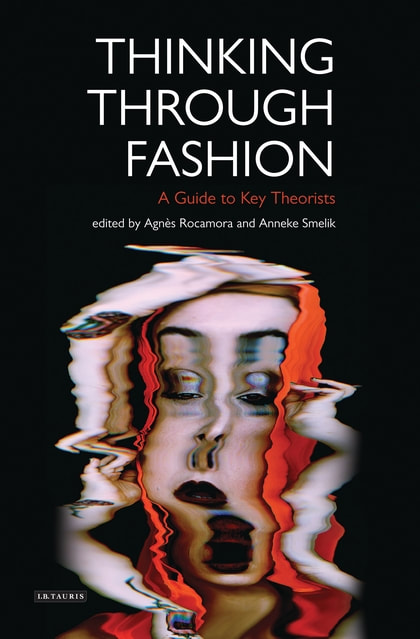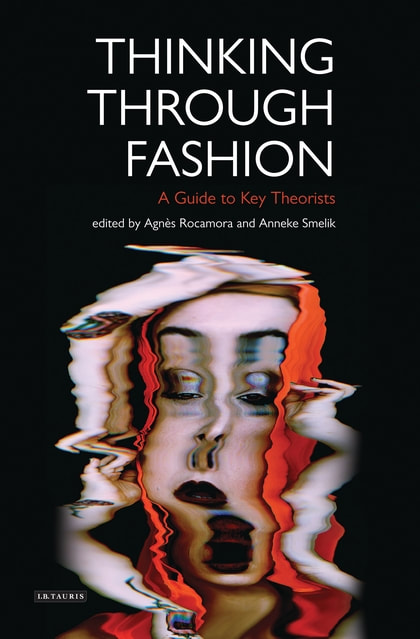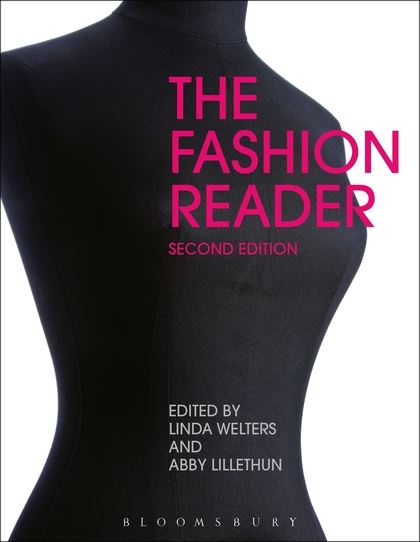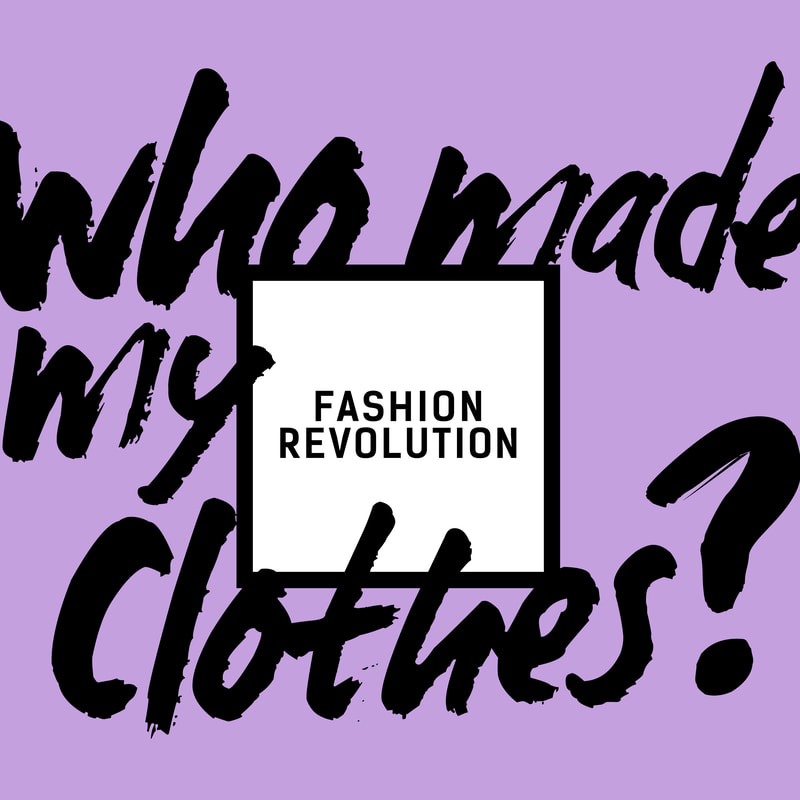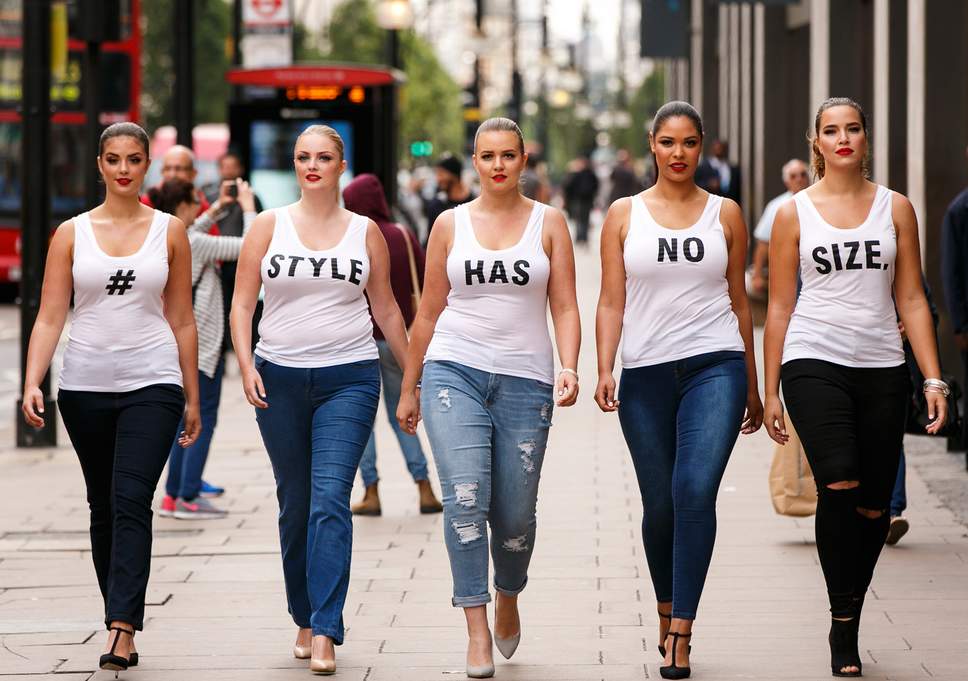Fashion Theory
Designed for the Department of Design and Communication, University of Southern Denmark
Course by Dr. Kat Sark
Course by Dr. Kat Sark
Course Description:
This course is an interdisciplinary, multimedia course that covers the cultural history of fashion theory. This course allows students to engage with fashion theory, cultural history, cultural analysis, media analysis, as well as gender and literary theory. This course is designed to help students develop skills in critical thinking, close reading, writing, comparative analysis, presentations, and digital skills. Class time will focus on theoretical and analytical discussions of assigned readings, films, videos, podcasts, etc. The course assignments will provide students with an opportunity to design and develop different web projects that have a direct impact and applicability for the community, and that support social justice causes and organizations.
Note: It is imperative that students come to class prepared to discuss the assigned readings and topics. This course is based on inter-teaching techniques and peer learning and communication.
Note: It is imperative that students come to class prepared to discuss the assigned readings and topics. This course is based on inter-teaching techniques and peer learning and communication.
Course Readings:
- Yuniya Kawamura, Doing Research in Fashion and Dress: An Introduction to Qualitative Methods. New York: Berg, 2011.
- Agnès Rocomora and Anneke Smelik (eds.) Thinking Through Fashion: A Guide to Key Theorists. London: I.B. Tauris, 2016.
- Tansy E. Hoskins, Stitched Up: The Anti-Capitalist Book of Fashion. Halifax: Fernwood Publishing, 2014.
- Other course readings and materials will be available online.
Course Evaluations:
- Participation (10%)
- Class Presentation (15%)
- Research Essay (30%)
- Digital Project (30%)
- Digital Project Presentation (15%)
Course Outline:
(Subject to changes / in progress)
|
Week 1
|
Introduction, Methodologies
Fashion studies Cultural analysis, Critical media literacy Web projects READINGS: Yuniya Kawamura, Doing Research in Fashion and Dress (2011) pp. 1-44 |
DISCUSSION:
What are fashion studies? What is cultural analysis? |
|
Week 3
|
What is fashion theory?
READINGS: Linda Welters and Abby Lillethun, The Fashion Reader (2011), Introduction Abby Lillethun, “Fashion Theory Introduction” The Fashion Reader (2011) pp.117-121 |
DISCUSSION:
What is fashion theory? Why do we need theory to understand fashion practices? FORUM 1: Find examples of interesting web projects that inspire you and post on the forum! |
|
Week 4
|
Fashion as paradox
READINGS: Aurélie Van de Peer, “Niklas Luhmann, Fashion between the Fashionable and Old-Fashioned” Thinking Through Fashion (2016) pp.200-214 PODCAST: Wardrobe Crisis, Do We Need Sustainable Fashion Weeks? |
DISCUSSION:
In what ways are fashion and fashion systems paradoxical? What do paradoxes reveal about the nature of fashion? |
|
Week 5
|
Fashion subcultures
Anti-Fashion Resistance Fashion READINGS: Yuniya Kawamura, “Placing Tokyo on the Fashion Map: From Catwalk to Streetstyle,” in Fashion’s World Cities, pp.55-68 Tansy E. Hoskins, “Resisting Fashion” Stitched Up (2014) pp.149-165 |
DISCUSSION:
What is culture? What is subculture? What is anti-fashion? What is resistance fashion? FORUM 2: Find examples of subcultural images that inspire you and briefly explain your choice. |
|
Week 6
|
Class – Consuming fashion
READINGS: Anthony Sullivan, “Karl Marx – Fashion and Capitalism,” Thinking Through Fashion (2016) pp.28-45 Adam Geczy and Vicki Karaminas, “Walter Benjamin – Fashion, Modernity and the City Street” Thinking Through Fashion (2016) pp.81-96 PODCAST: Wardrobe Crisis, Fast Fashion Question Time |
DISCUSSION:
What is “historical materialism” and how does it relate to fashion? What is a Marxist critique of capitalism? What is commodity fetishism and how does it relate to fashion? |
|
Week 7
|
Fashion, identity, race
Exclusions from fashion READINGS: Tansy E. Hoskins, “Is Fashion Racist?” Stitched Up (2014) pp.128-147 Jane Tynan, “Michel Foucault, Fashioning the Body Politic” Thinking Through Fashion (2016) pp.184-199 |
DISCUSSION:
How is race represented in fashion and fashion media? How can fashion and fashion studies be de-colonialized? FORUM 3: Find and post positive examples of representations of race in fashion and briefly explain your choice. |
|
Week 8
|
Fashion and gender
READINGS: Elizabeth Wissinger, “Judith Butler: Fashion and Performativity” Thinking Through Fashion (2016) pp.285-297 Tansy E. Hoskins, “Fashion and Size” Stitched Up (2014) pp.108-127 |
DISCUSSION:
What is the difference between performance and performativity? What role does drag play in fashion performativity? What are means of control imposed on female (and male) bodies by media? FORUM 4: Find and post positive examples of intersectional representations of (trans)gender in fashion and briefly explain your choice. |
|
Week 9
|
Fashion media and technology
READINGS: Efrat Tseëlon, “Jean Baudrillard, Post-Modern Fashion as the End of Meaning” Thinking Through Fashion (2016) pp.215-232 Anneke Smelik, “Gilles Deleuze, Bodies-without-Organs in the Folds of Fashion” Thinking Through Fashion (2016) pp.165-183 |
DISCUSSION:
What is post-modern fashion and what role does desire play in it? How is it represented in media? What is post-modern hyperreality, and what role does technology play in constructing and maintaining it? How do wearable technology or “fashionable technology” interact with the body? |
|
Week 10
|
Fashion ethics and sustainability
READINGS: Lise Skov, “Ethics and Industry” Berg Encyclopedia of World Dress and Fashion: West Europe (2010) pp.152-158 Robert J.S. Ross, “Sweatshop: A First Definition” The Fashion Reader (2011) pp.313-315 Richard McIntyre, “Not Only Nike’s Doing It” The Fashion Reader (2011) pp.317-321 |
DISCUSSION:
What are some of the key issues in fashion ethics and sustainability today? FORUM 5: Find examples of inspiring fashion activism projects or campaigns and post on the forum with a brief explanation! |
|
Week 11
|
Fashion ethics and activism
READINGS: Tansy E. Hoskins, Stitched Up (2014) “Stitching It” pp.68-88 "A Bitter Harvest” pp.90-107 “Reforming Fashion” pp.166-183 PODCAST: Wardrobe Crisis, Fashion Revolution's Sarah Ditty, Pro-Fashion Protest |
DISCUSSION:
Is ethical and sustainable fashion really possible? What reforms do we need to make fashion more ethical and sustainable? |
|
Week 12
|
Web Project Presentations
|
DISCUSSION
|
|
Week 13
|
Web Project Presentations
|
DISCUSSION
|
Bibliography:
Hoskins, Tansy E. Stitched Up: The Anti-Capitalist Book of Fashion. Halifax: Fernwood Publishing, 2014.
Kawamura, Yuniya. Doing Research in Fashion and Dress: An Introduction to Qualitative Methods. Oxford, New York: Berg, 2011.
Kawamura, Yuniya. “Placing Tokyo on the Fashion Map: From Catwalk to Streetstyle,” Fashion’s World Cities. Ed. by Christopher Breward and David
Gilbert. New York: Berg, 2006. 55-68.
Kawamura, Yuniya. Fashion-ology: An introduction to Fashion Studies. New York: Berg, 2005.
Skov, Lise. “Ethics and Industry.” Berg Encyclopedia of World Dress and Fashion: West Europe, ed. by Lise Skov. New York: Bloomsbury, 2010. 152-158.
Skov, Lise and Melchior, Marie Riegels, “Research Approaches.” Berg Encyclopedia of World Dress and Fashion: Global Perspectives, ed. by Joanne B.
Eicher and Phyllis G. Tortora. New York: Bloomsbury, 2010. pp.11-16.
Rocomora, Agnès and Smelik, Anneke (eds). Thinking Through Fashion: A Guide to Key Theorists. London: I.B. Tauris, 2016.
Welters, Linda and Lillethun, Abby. The Fashion Reader. 2nd Edition. New York: Berg, 2011.
Kawamura, Yuniya. Doing Research in Fashion and Dress: An Introduction to Qualitative Methods. Oxford, New York: Berg, 2011.
Kawamura, Yuniya. “Placing Tokyo on the Fashion Map: From Catwalk to Streetstyle,” Fashion’s World Cities. Ed. by Christopher Breward and David
Gilbert. New York: Berg, 2006. 55-68.
Kawamura, Yuniya. Fashion-ology: An introduction to Fashion Studies. New York: Berg, 2005.
Skov, Lise. “Ethics and Industry.” Berg Encyclopedia of World Dress and Fashion: West Europe, ed. by Lise Skov. New York: Bloomsbury, 2010. 152-158.
Skov, Lise and Melchior, Marie Riegels, “Research Approaches.” Berg Encyclopedia of World Dress and Fashion: Global Perspectives, ed. by Joanne B.
Eicher and Phyllis G. Tortora. New York: Bloomsbury, 2010. pp.11-16.
Rocomora, Agnès and Smelik, Anneke (eds). Thinking Through Fashion: A Guide to Key Theorists. London: I.B. Tauris, 2016.
Welters, Linda and Lillethun, Abby. The Fashion Reader. 2nd Edition. New York: Berg, 2011.
Disclaimer: The contents of this site are copy-right protected and cannot be reproduced without the author's permission. © Katrina Sark, 2019

